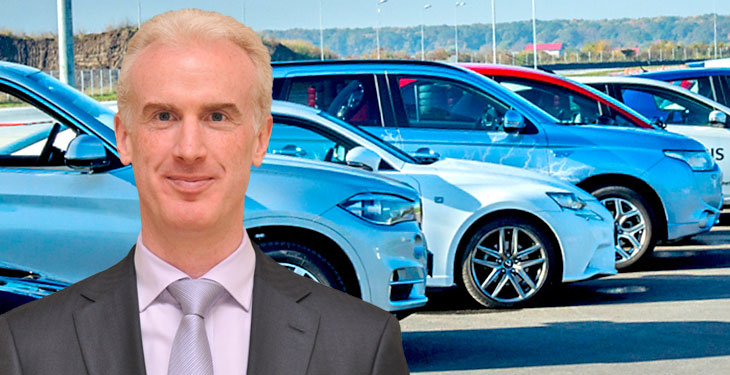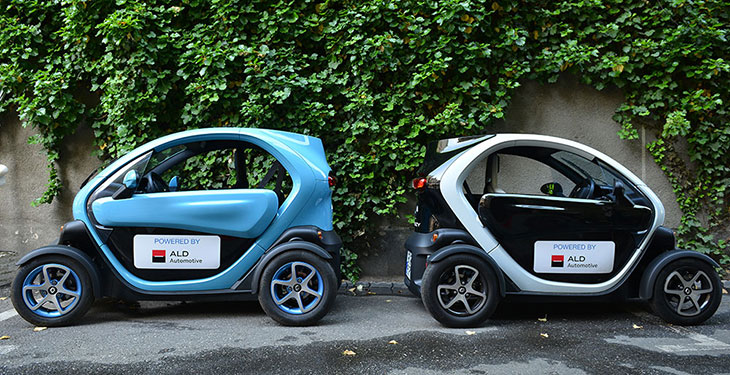ALD Automotive has been operating in the Romanian operational leasing market for 11 years. Innovation, digitalization and environmental protection are the most important guidelines of ALD Automotive and have translated into services and solutions designed for the large vehicle fleet holders of Romania. We have discussed with Shane Dowling, General Manager ALD Automotive, about the lessons learned over the past decades and the novelties from 2016.
In 2005, ALD Automotive entered the Romanian market and laid the foundations of the operational leasing market. How are things today in Romania?
Operational leasing has changed a lot in the years. Back in 2005, when ALD Automotive started out in Romania, it was one of the first international companies in this field, in an emerging market. This product was known only to corporate customers who used it by following the example of their parent companies. However, nowadays, 11 years later, we can say that the operational leasing becomes more and more spread, as local companies and SMEs are also starting to acknowledge the benefits of this financing form.
If we analyse the situation in terms of the figures, too, we can say that this sector is experiencing a positive development, as the only form of financing with such a large scope in recent years, growing constantly each year. For instance, in 2007, out of 348,000 new registered vehicles in the Romanian market, just 1.6% was financed through operational leasing, while, in 2012, this percentage reached 13%, then 17.3% in 2013, 16% in 2014 and 16.1% in 2015. Meanwhile, the number of vehicles registered by operating lease companies has grown constantly, from 9,600 in 2007 to 55,500 last year, according to ASLO (the Association of Operational Leasing Companies).
We can also see new trends emerging, while international trends are starting to be locally implemented as well. Whether it is the digitalization of the services or the companies’ interest in new technologies supporting the environment or even the emergence of telematics solutions, all these contribute to the development of this form of financing and to a growth in the number of companies using it.
Additionally, as of last year, operational leasing companies have focused on other market segments that have started grasping the benefits of the products and services offered. SMEs have gained appeal for the players in the leasing sector, which have created dedicated offers, considering the potential of this segment.
Over the last few years, we have also noticed an increased awareness and interest in lower CO2 footprints in the local market, with a clear emphasis on CSR strategies. And one of the key products offered by ALD Automotive to tackle this very challenge is the offer of electric and hybrid vehicle operating leases. As such, last year, ALD Automotive delivered its first electric vehicle fleet to one of its top customers. Such initiatives are crucial for our strategy and we hope to see more of these actions from our customers.
Another major change in the operational leasing area over the past few years has been the integration of technologies into the core business of fleet managers and drivers. Digitalization has changed the way we act and the customers’ wishes are focusing more on mobility, speed and ease in proper fleet management. In order to meet these needs, we have created platforms and apps which allow contact with, and geo-localization of, the suppliers, as well as real-time analyses and reports for the entire fleet managed. In 2016, we will continue innovate this digital field and will be launching some new initiatives.
The needs for fleet management services have also changed over the past few years and, at present, we can see a very clear focus on price to the detriment of quality, with impact on user safety, too. However, ALD Automotive will not compromise on the quality of its services, with which it has accustomed its customers, and insists on a policy of maintenance and repairs on all its vehicles solely in certified brand service shops. Moreover, unless otherwise specifically requested by customers, all our vehicles are equipped with premium tyres. We have also heavily promote defensive and eco driving classes, in partnership with the Titi Aur Academy and the results so far have proven a significant decrease in repair costs for all our customers.
Whether we are talking about the digitalization of operational leasing services, new categories of customers interested in the benefits of such a product or the focus of companies on fleets with lower CO2 consumptions, it is clear that European trends are being implemented locally, which further brings benefits for everyone involved.
2015 marked the first step towards promoting electric and hybrid vehicles to both customers and employees. What are the prospects of this market today and what are the main obstacles in the development of this market?
We are one of the active promoters of vehicle fleet greening and the use of alternative means of transportation since we feel responsible for constantly improving our customers’ fleets through solutions meant to reduce fuel consumption and CO2 emissions.
As a result of these actions, in 2015, we delivered the first electric fleet in operational leasing to a top customer in Romania and we are currently also negotiating with other partners for adopting these new technologies. Furthermore, last year, we bought two hybrid vehicles for ALD Automotive employees, while our customers constantly test different types of electric and hybrid cars. Based on our talks with them, we notice a growing interest in the different types of alternative transportation, although we also face reluctance in terms of the price, which is still high compared to traditional vehicles and, of course, the lack of proper infrastructure. These two major considerations hinder the market penetration of these technologies and we have to find solutions together with the authorities and the private companies operating in this sector.
If we stick strictly to electric cars, a long drive with an electric car in Romania is clearly still impossible because of the small numbers of charging stations. On the other hand, the rather low number of electric cars out there has not persuaded the authorities to invest in the infrastructure. Thus, at least for the next stage, the future of electric cars depends on the cohesive measures to be taken in two major areas: on the one hand, support for building charging stations and, on the other hand, the offer of financial incentives for buying electric cars.
As for hybrid technologies, these have indeed been present for longer in the market, including in Romania, and have more fans thanks to their easier adaptation to the infrastructure conditions. There are basically many varieties of hybrid cars (the regular hybrid or the plug-in hybrid) and the advantage of this type of vehicle is that it can adapt rather well to the holder’s life and driving style. Since their dependence on infrastructure is much lower than for electric cars, at least initially, they prevail among customers’ choices. And this interest, combined with a financial incentive programme from the authorities can lead to an increase in sales for this type of vehicles in the future.
Clearly, though, things are going in the right direction and proof is in the doubling of eco vehicles purchased in 2015, compared to 2014, with numbers reaching 495 units. We are doing our best to promote the greening of the vehicles fleets and we constantly encourage our customers to think about such alternatives for their fleets.
What electric models are available in Romania and what are the price ranges?
For the time being, on the local market, prices range between 6,700 and 36,000 Euros for the standard features. Buyers can choose between BMW i3, Renault Zoe, Renault Twizy, Kangoo Z.E., Volkswagen e-Up!, Volkswagen e-Golf, alongside second hand models of vehicles not yet sold in Romania.
The performances and features vary from one model to the next, as with any car, and as the price goes up, the features also improve; thus, electric cars can meet the needs of a wider range of customers.
What are the objectives of ALD Automotive for 2016 and how are these linked to electric mobility?
This year’s objectives focus on the company’s development and one of our major targets is the increase of our fleet and the strengthening of our portfolio, by both renewing contracts with existing customers and signing contracts with new ones. Naturally, our entire activity continues to be focused on maintaining a high level of satisfaction in terms of our services.
This year, the company development objectives naturally continue to be linked to electric mobility and, given international and local trends, we will continue our initiatives of supporting vehicle fleet greening and promoting electric and hybrid vehicles. We wish to increase the number of customers trying out these technologies and we will also continue supporting them, as we have in the past, by specialised consultancy for a full diagnosis of their vehicle fleet and the identification of any areas to be optimised from an environmental and economic point of view.
We are very much aware that, because of the obstacles concerning the infrastructure and the still rather high prices, not all our customers will invest in their electric mobility. That is why we will continue our efforts of advising them in their selection of cars with lower CO2 consumption in order to help them implement more environmental friendly car policies.
Another programme which we will be continuing this year is that of the defensive and eco driving classes, offered to ALD Automotive vehicle users, in partnership with the Titi Aur Academy. Defensive and eco driving improves drivers’ safety on the road and has an economic and environmental impact.
Furthermore, SMEs will continue to enjoy our special attention as we will also offer new services and programmes dedicated to this segment, whether they are White Label or direct ones with the dealers. Last, but not least, since our customers’ need for mobility has increased, this year, a priority for ALD Automotive will consist of the development of mobile applications and online platforms, adapted to their needs by using the latest technologies.

